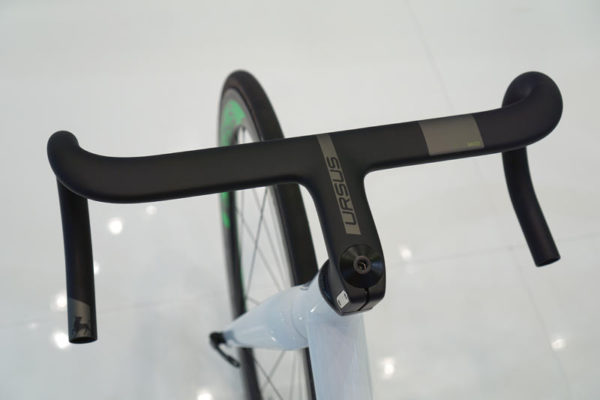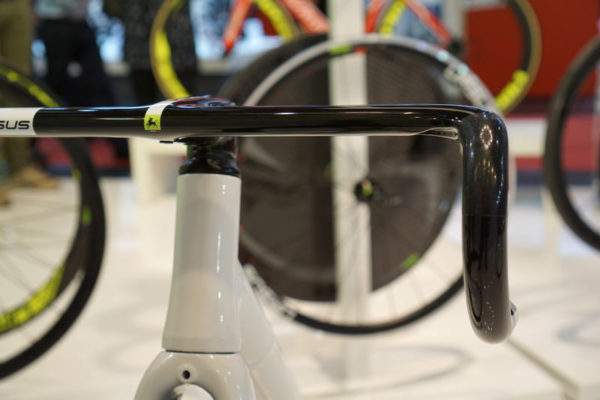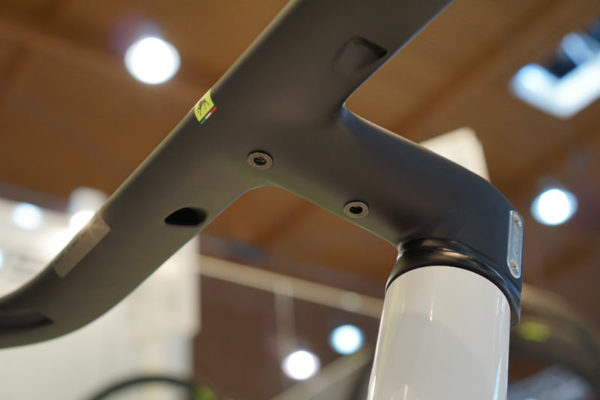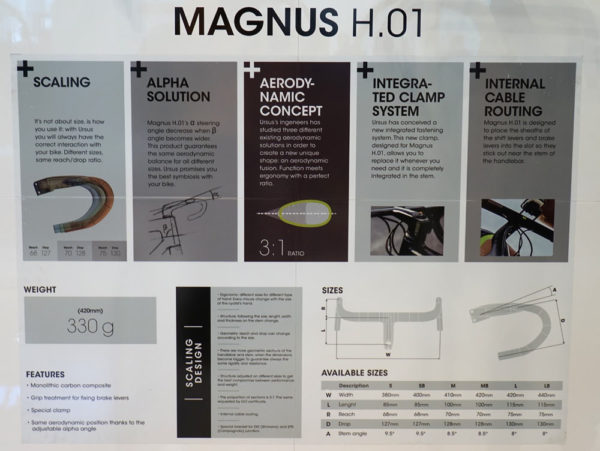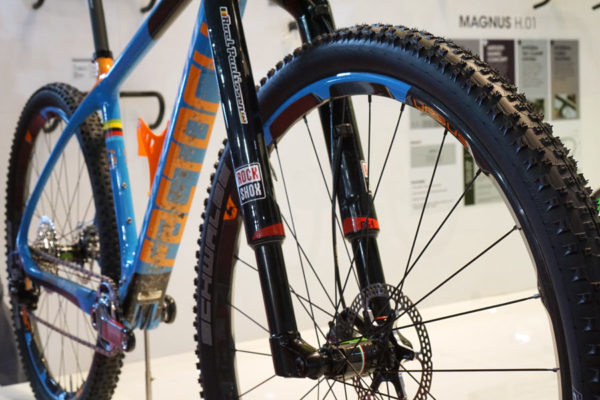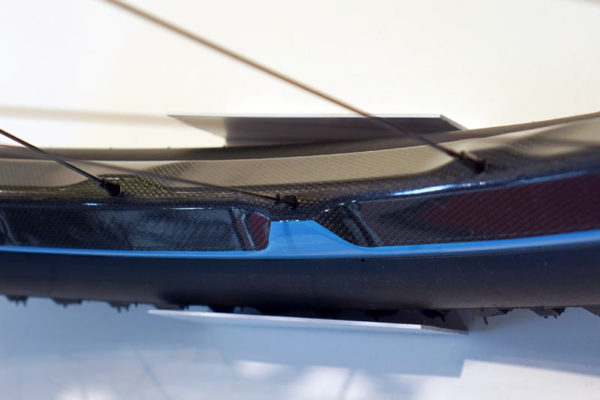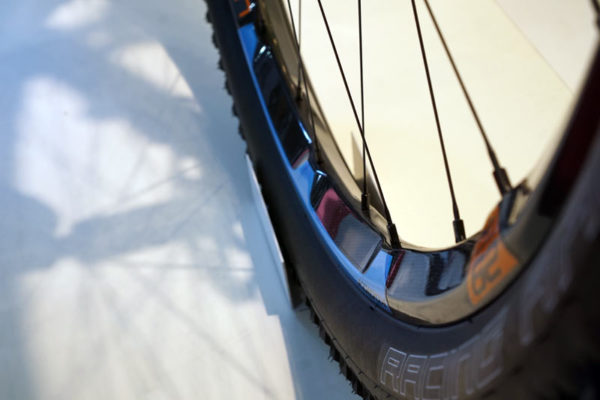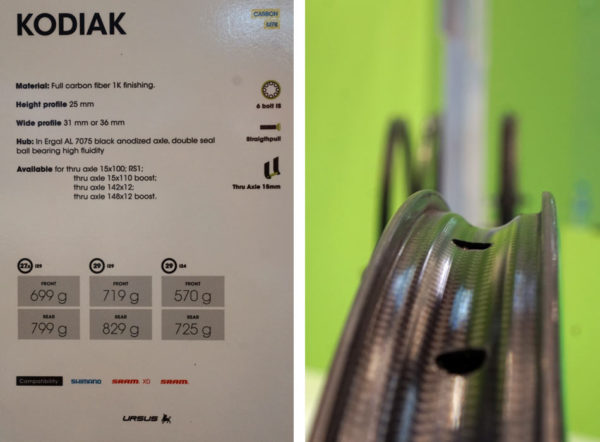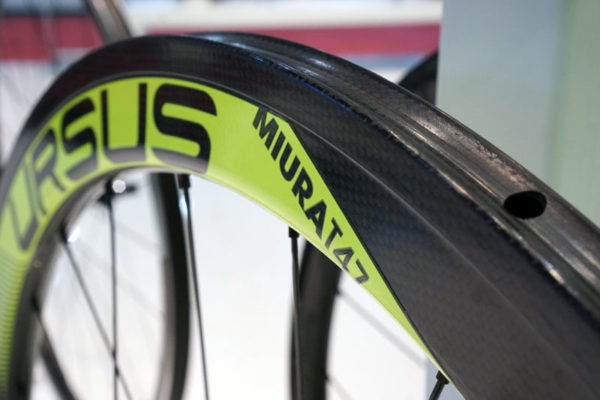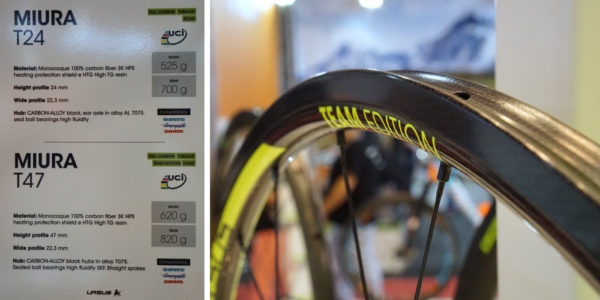Ursus has shown some interesting concepts before, like copper-infused brake tracks, and they make some darn nice looking kickstands. This year, the Italian brand had a new one-piece carbon fiber handlebar-stem combo, new carbon mountain bike wheels with offset spoke placements on the rim, and updated tubular road wheels.
The Magnus H.01 handlebar unit is full carbon and weighs in at just 330g, making it a very light part on its own, but especially so considering it’s designed as an aerodynamic piece…
The tops use the UCI-allowable 3:1 ratio in a tapered foil shape and tuck the cables inside the bar to minimize drag.
It’s available in six sizes that scale the reach and drop proportionately. The stem hardware is nicely integrated in a way that doesn’t require bonding threaded inserts into the carbon fiber, which simplifies construction and should prove more durable over time. Or, at least, replaceable should you accidentally strip the threads.
The underside is ready for bolt-on out-front cycling computer mounts.
Click image to enlarge for all the tech details.
The new Kodiak mountain bike wheels use a full carbon rim with offset bulged spoke insertion points.
Interestingly, they don’t cross spokes from one side of the hub to the other side of the rim (meaning, left flange to rim bulging out on the right), which would offer better triangulation. The reason? They tout the wheel’s ability to track the terrain and ride comfortably, so it’s to provide a little more vertical compliance and rely on the inherent stiffness of a carbon rim to reduce lateral play.
Alloy hubs with 28 straight pull Sapim CX-Ray spokes per wheel and thru axle readiness finish the package.
The 29er comes in two rim widths (24mm or 29mm internal, click image to enlarge), and the 27.5 in just one (29mm internal). It’s a hookless bead that’s tubeless ready with the addition of rim tape. Note the weights, particularly for the narrower 29er set…complete wheelset at just 1,295g!
The Ursus Miura carbon tubulars switch from their older 12K woven finish to a smaller, 1K finish to better match modern bikes.
Otherwise, they carry over much the same. There’s also a T37 size, and clinchers and disc brake models are also available.
